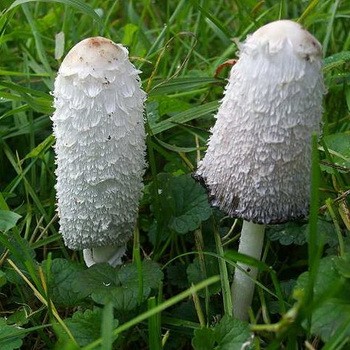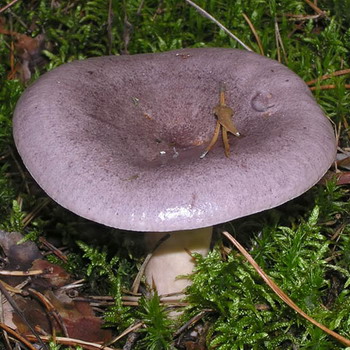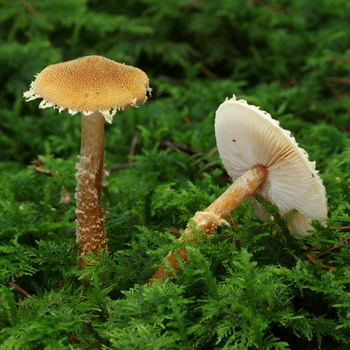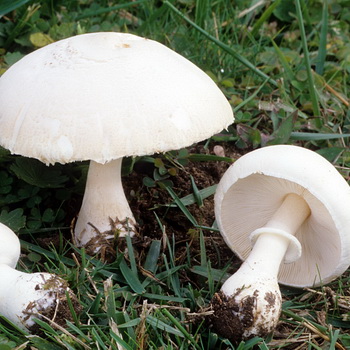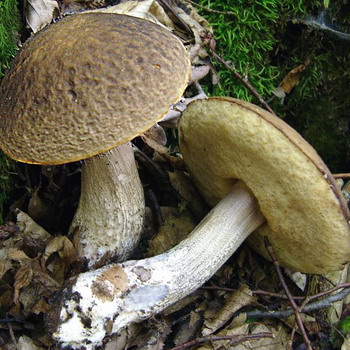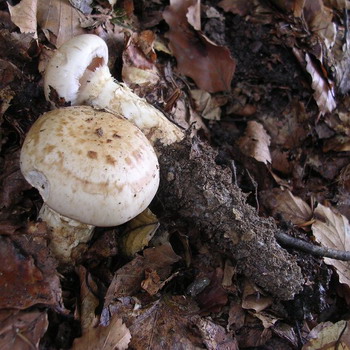Coprinus ink or gray
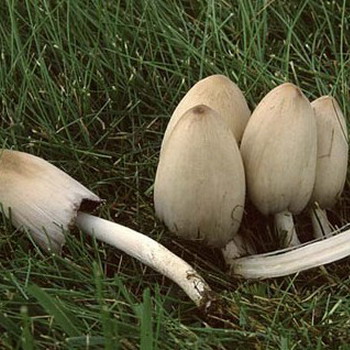
Hat (diameter 4-12 cm): grayish or slightly brown, in the center brighter. It can be with numerous small dark scales. In young mushrooms, it has the shape of a small chicken egg, which over time becomes like a bell. The edges are uneven, in small cracks.
Leg (height 7-22 cm): white, slightly brownish at the base. Usually curved, hollow.
Records: loose and frequent, white, brown over time, and then black and blur. Young mushrooms have a ring, but with age it disappears.
Pulp: thin, white, darkens strongly and quickly at the site of a cut or break. It does not have a pronounced smell.
In medieval Russia, ink dung beetles were used to make ink, which was added to the usual ones to protect important government documents from falsification: after drying, the spores of the fungus form a unique pattern.
Doubles: are absent.
Ink mushroom or gray dung beet grows from mid-May to early October in temperate countries of the Eurasian continent.
Where can I find: on manicured soils, compost or manure heaps or in humus-rich deciduous forests.
Eating: only young mushrooms can be boiled, marinated and fried.
Application in traditional medicine (data not confirmed and not passed clinical trials!): Ink dung beetle is used as a remedy for drunkenness.
Important! The use of dung beetle along with alcohol causes poisoning, but remains harmless to drinkers.
Photos of gray dung beetle are invited to see below:
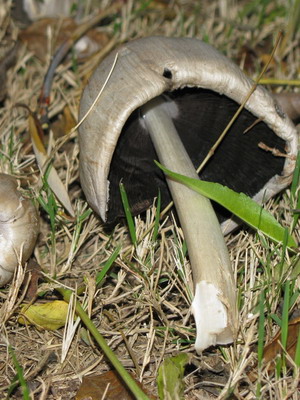
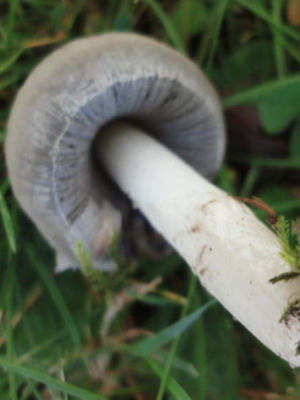
Other names: gray ink mushroom.
